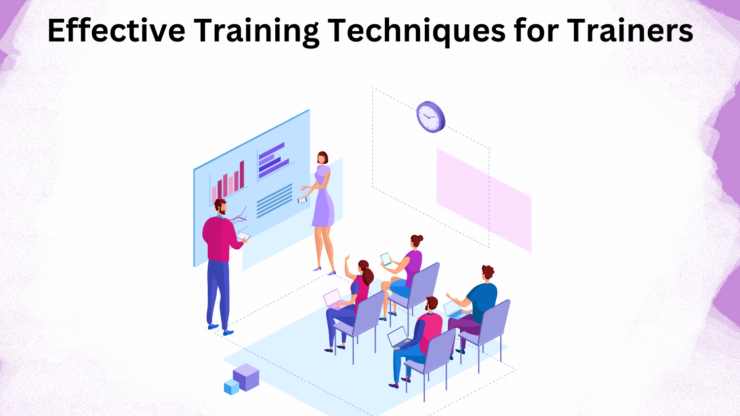Organisations must invest in training that helps employees adapt to new circumstances and organisational changes. A trainer’s role is critical in enabling learning and driving performance improvement, whether onboarding new employees, providing professional development programmes, or upskilling current employees. Trainers need to be well-versed in various training methods and best practices to engage learners, increase retention, and optimise learning outcomes. You can join Train The Trainer Courses and understand the best practices that can be implemented in your organisation. This blog discusses effective training strategies and Train The Trainer Best Practices that can help trainers in your organisation.
Table Of Contents
- Understanding Effective Training Techniques
- Essential Training Techniques for Trainers
- Conclusion
Understanding Effective Training Techniques
Effective training techniques are a broad category that includes many different approaches, strategies, and methods to attract and retain learners and encourage their skills. Meaningful and impactful learning experiences can be created by utilising these techniques, which draw from principles of adult learning theory, cognitive psychology, and instructional design. Trainers can accommodate their learners’ varied learning styles and preferences while still accomplishing course goals when they draw on their knowledge, flexibility, and imagination.
Essential Training Techniques for Trainers
Active Learning
Instead of just receiving information, participants are encouraged to engage with the training content through active learning techniques. Active learning methods encompass a wide range of approaches, some of which include group work, problem-solving exercises, simulations, case studies, and role-playing. Trainers can encourage more in-depth comprehension, critical thinking, and practical skill application by having learners engage in interactive and participatory activities.
Visual Aids
Slides, charts, diagrams, and videos are all examples of visual aids that can help train participants to understand and remember more complex concepts through pictures and other visual elements. To enhance verbal instruction, reinforce important concepts, and engage visual learners, trainers should strategically use visual aids. To prevent information overload and keep learners engaged, it is essential to keep visual aids clear, brief, and aesthetically appealing.
Storytelling
One effective method of training that captures learners’ attention, makes them feel something, and helps them retain more information is storytelling. To make training material more relatable and memorable, trainers can use real-life anecdotes, case studies, or fictional scenarios to illustrate important ideas, contextualise information, and increase retention. The key to good storytelling is connecting with learners emotionally by creating stories that reflect their interests, backgrounds, and goals.
Peer Learning
Peer learning is a method of enhancing learning and collaboration by drawing on the expertise and experiences of one’s peers. Group discussions, peer feedback sessions, and collaborative projects are all examples of peer learning activities that instructors can use to foster an environment where learners feel comfortable supporting one another, sharing what they’ve learned, and interacting socially. The benefits of peer learning include increased engagement, motivation, and a stronger feeling of community.
Gamification
Gamification is making training activities more interactive, entertaining, and rewarding by utilising aspects of game design and mechanics. Challenges, quizzes, badges, leaderboards, and prizes are all ways that trainers can gamify training sessions and make them more engaging and competitive. Through gamification, learners’ intrinsic motivation can be harnessed, which promotes skill development, increases retention, and engages them more.
Microlearning
Typically lasting anywhere from a few minutes to fifteen to twenty-five minutes, microlearning presents training material in small, easily digestible portions. Microlearning allows instructors to impart topic- or skill-specific instruction through concise videos, infographics, quizzes, and interactive modules. Microlearning enables on-the-go access to training materials, supports just-in-time learning, and accommodates learners with short attention spans.
Feedback and Reflection
A key component of efficient learning and growth is reflection, which, in turn, requires feedback. Feedback on performance, progress, and improvement opportunities should be promptly given to learners by trainers and should be constructive. Get your learners to think critically about what they’ve learned, how they can use it in the real world, and how they can improve over time: reflection and feedback foster introspection, responsibility, and continued education throughout life.
Conclusion
Suitable training methods are about more than just imparting knowledge; they also create an environment conducive to learning, encourage teamwork, and spark an interest in and commitment to constant development. When trainers are open to new ideas, flexible, and creative in their approach to training, they can help learners reach their maximum potential, which in turn benefits their organisations. Trainees and the organisations they work for can benefit significantly from trainers who are selflessly committed to their work and who put the needs of their learners first.







